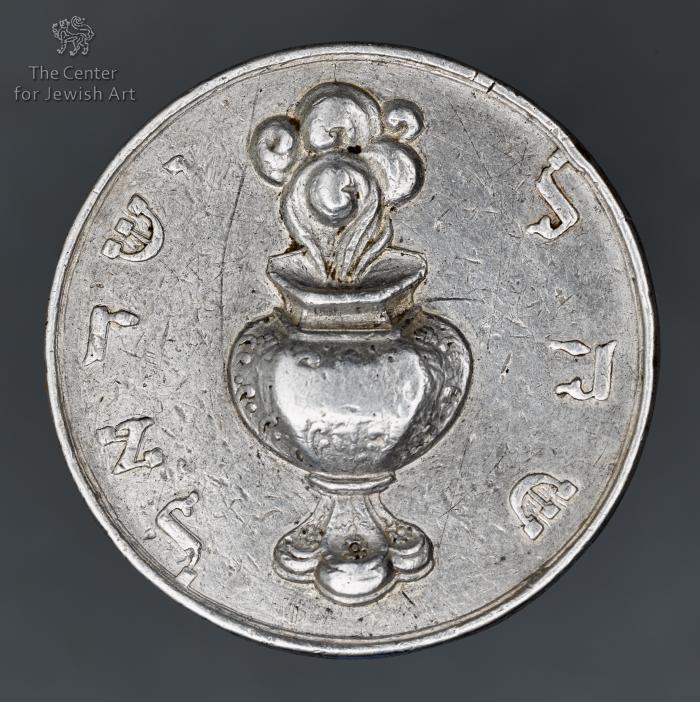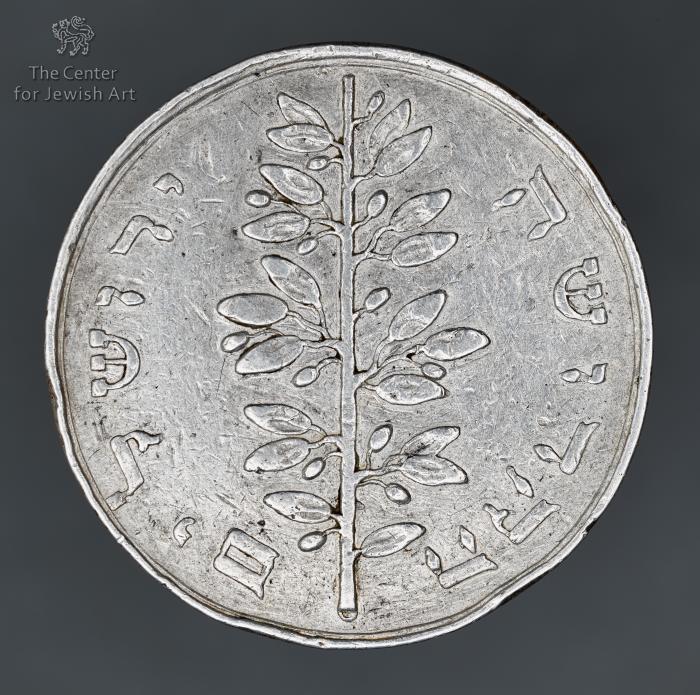Obj. ID: 39144 False Shekel, Germany, circa 1700

sub-set tree:
The following description was prepared by William Gross:
The origin of these censer pieces may be found in the 14th century when, even after the loss of the Crusader kingdoms in Palestine, Europeans continued to make pilgrimages to the Holy Land. These excursions were dangerous and sometimes resulted in death from the many illnesses and plagues that ravished the Middle East. Most of these voyagers were deeply religious Europeans, tracing the paths or walking in the footsteps of their Lord. Many of them wore pilgrims' badges or some other sign of their faith and, if possible, they acquired relics or coins to use as talismans on their voyage and to bring home as mementoes. Eventually the merchants in Palestine, lacking authentic artifacts or coins to sell to the pilgrims, fabricated imitations. Especially popular were medals or tokens that looked like shekels and were offered as examples of the 'Thirty Pieces of Silver' paid to Judas Iscariot for betraying Jesus. These became the most common types of early false shekels available in souvenir shops and many of them ended up being deposited in the home town churches of the pilgrims. Selling these tokens was a lucrative business and many other types of coin-like amulets were sold at European places of pilgrimage, especially in Rome. The popularity of these religious pilgrimages to the Holy land and the souvenir medals or badges purchased by the travelers continued right up into the present century.
This shekel medal is an example of Kisch type C-1. Such shekels made in silver were much rarer than those in other metals. Inscription: Shekel Yisrael; Holy Jerusalem



